Your cart is currently empty!

OM System OM-1 Review | Photography Blog

Introduction
The OM-1 is the brand new range-topping professional model in Olympus/OM System’s well-established Micro Four Thirds mirrorless camera system.
It’s the first model to be released under the OM System banner, after Olympus sold their camera division to OM Digital Solutions GmbH in 2020.
In terms of where it sits within the Olympus/OM System camera line-up, the new OM-1 is positioned as the flagship camera, above both the much larger E-M1X and the similarly sized E-M1 III models.
The fully weather-proof OM System OM-1 has a brand new 20.4 megapixel stacked BackSide Illuminated (BSI) sensor, new TruePic X processor, and an amazing 5-axis in-body image stabilisation system that provides up to an incredible 8 steps of compensation.
Other standout features include 50fps burst shooting with continuous AF/AE or 120fps without, Cinema 4K video recording at 60p and 1080p at 240fps, 1053-point all-cross-type Dual Phase and Contrast Detection AF system that can additionally recognise vehicles, a 5,760K-dot electronic viewfinder, a 1,620K dot vari-angle LCD touchscreen, dual UHS-II SD-card slots, and 50 megapixel Handheld High-Res Shot and 80 megapixel Tripod High-Res Shot modes.
The OM System OM1 is made in Vietnam and is available now in black only. It is priced at £1999 / $2199 body-only in the UK and US, respectively, which is £200 / $400 more than the previous E-M1 Mark III model was at launch.
Ease of Use
The OM System OM-1 looks an awfully lot like its 3-year-old predecessor, the Olympus EM-1 Mark III, with most of the improvements being made to the inside of the camera rather than to the outside.
The OM-1 weighs in at 511g body only and measures 138.8 x 91.6 x72.7mm, a whole 7g heavier and ever so slightly bigger than the previous model. You can’t use the same vertical grip on both models, though, with the HLD-9 being superseded by the new HLD-10.
Just like the original E-M1, which was released way back in 2103, this new camera also boasts a tough dust-, drip- and freeze-proof magnesium alloy body, but it’s now even tougher as it’s rated in the more stringent IP53 dustproof and splashproof protection class, which means that it is protected against spraying water when tilted up to a 60-degree angle.
When used together with a similarly weatherproof lens, the OM-1 should withstand most things that you care to throw at it.
The OM System OM-1 is now equipped with independent AEL and AF-ON buttons, which is really the only notable external difference between it and the Olympus EM-1 III.
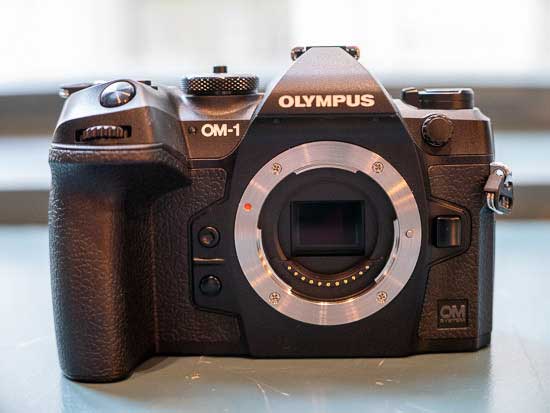 |
Otherwise, the two cameras are pretty much nigh-on identical in terms of their control layout.
The Olympus E-M1 III has a generously sized hand-grip which makes it easy to get a firm hold on the camera with three fingers whilst operating the shutter button with your right forefinger.
The hand grip and indeed most of the front of the camera is covered in a leatherette-like textured material. There are two buttons next to the left of lens mount. By default these controls are assigned to one-touch white balance and depth-of-field preview but, like almost everything else on the OM-1, they can be reprogrammed to perform different tasks if you so desire.
The OM-1 has an improved electronic viewfinder and vari-angle LCD screen combination. The new OM-1 carries over the 1.65x magnification of the E-M1X but significantly increases the resolution to an impressive 5,760K-dots. It also uses OLED rather than LCD technology. And whereas the older E-M1X and E-M1 III both have a 1,040K-dot resolution LCD screens, the new O-M1 has a slightly better 1,620K-dot screen.
On the top of the camera, to the left of the viewfinder housing (when viewed from above and behind) there is a cluster of controls comprised of two raised buttons and a power switch. Each of the two buttons provides access to two sets of settings.
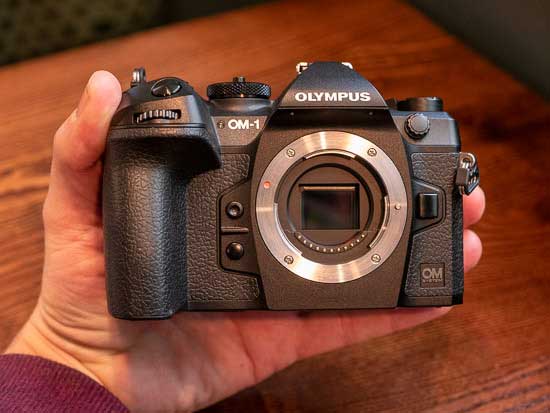 |
Press the first one and you can adjust the camera’s drive modes and flash settings with the rear and front control dials, respectively. Hit the second and you can cycle through the various focus and metering modes offered by the camera. The placement of the on/off switch means that you need to use your left hand to turn on the camera.
Moving over to the other side of the viewfinder hump, we find a traditional shooting mode dial with a handy locking pin in the middle. On the OM-1 the mode dial locks with one press of the locking pin and unlocks with a second press, which is a clever idea.
The dial itself offers the usual P, A, S and M modes, plus a Bulb and dedicated Movie mode and separate positions for 4 separate Custom modes for quick access of custom settings banks, or Mysets in Olympus parlance.
The OM System OM1 inherits the still innovative 2×2 Dual Control system from its predecessors. This is comprised of two top-mounted control dials and a function lever on the rear that’s pretty easy to reach with your right thumb.
The function lever has two settings. In the first position, moving the control dial on the front of the camera adjusts the aperture while the dial on the back adjusts the shutter speed. On the second setting, the dials change the ISO value and white balance respectively.
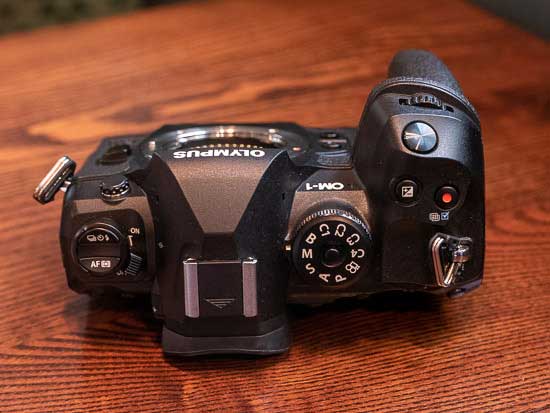 |
You can also configure the switch’s operation too – for example, you can turn it into a handy AF/MF toggle if that makes more sense to you.
The remaining controls on the camera’s top plate include the already mentioned shutter release button, plus a dedicated Movie Record button and an Exposure Compensation button.
There’s a handy ISO button on the rear right shoulder and also a small but tactile multi-selector joystick that makes it straight-forward to quickly move the AF point using your right-hand thumb whilst holding the camera up to your eye.
The rear of the camera is dominated by a large, vari-angle rear touchscreen which can be tilted to the side and rotated to the front for easier selfies. This LCD panel has a higher resolution, 1,620K dots, than its predecessor, and capacitive touchscreen technology.
The Info, Menu, Playback and Delete buttons have all been carried over from the previous model in exactly the same locations. The Menu button is located over to the far-left of the viewfinder alongside the Display button.
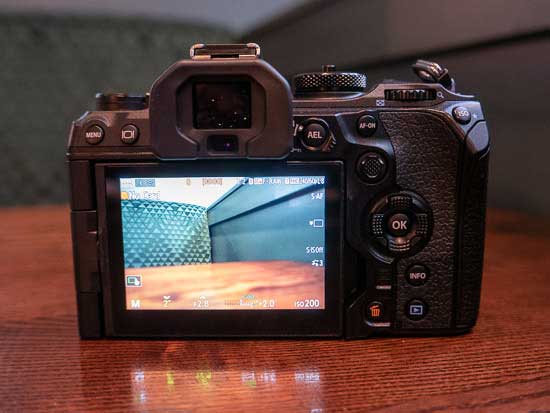 |
The OM1 has a much improved menu screen configuration that has been completely redesigned to make it easier to find the desired functions, and make changing settings easier for first-time users. It even tells you why some menu items are greyed-out and unavailable!
On the right is a separate AEL button encircled by the afore-mentioned function lever, with the new AF On button alongside it, which is the main ergonomic change when compared to the EM-1 III.
The OM-1 makes do without a built-in pop-up flash, and sadly no longer comes bundled with the tiny FL-LM3 flash unit which clips into the external flash hotshoe.
You can still use more powerful system flashes with the OM1, such as the powerful FL-900R, the FL-36R, the FL-600R or the FL-50R, but these are of course sold separately.
The OM System OM-1 uses a new BLX-1 battery which is different to the BLH-1 used in the previous E-M1 III camera, so you can’t carry on using all of your old batteries if you upgrade. This provides up to 520 still images or 160 minutes of video, an increase of 25% compared to the E-M1 III.
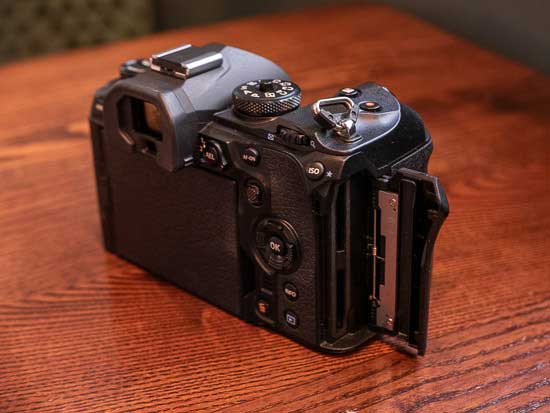 |
The OM1 also provides the ability to charge it on the go via the USB port and also power it using an external power bank, two features that we’re seeing more and more of on recent cameras.
Note that there is no external battery charger included in the box, so the only way to charge it is via USB with the battery in the camera, unless you purchase the optional OM System BCX-1 Battery Charger which can charge two batteries at once.
There is enough room for dual memory card slots on the OM-1, and thankfully both of them now support the fastest UHS-II standard, which should help the camera keep up with all those high-speed bursts.
The OM System OM-1 is equipped with a brand new image sensor which focuses on out and out speed.
It continues to offer exactly the same 20-megapixel resolution as the EM-1 Mark III, which will likely disappoint those looking for an increase in resolution, especially as Panasonic have recently made the jump to 25 megapixels in their GH6 model.
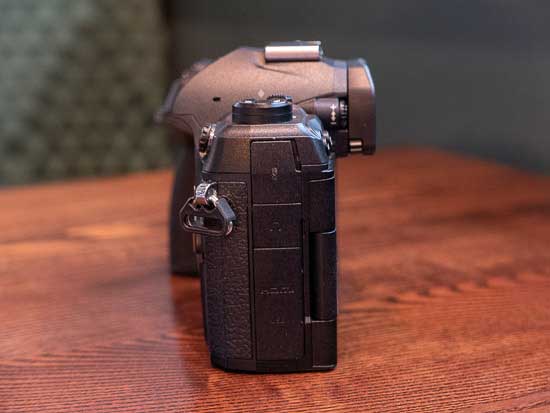 |
The main upgrade is the sensor technology that the OM1 uses. With a stacked, BackSide Illuminated (BSI) sensor at its heart, the OM-1 can shoot much more quickly than its predecessor, which was itself no slouch, whilst also offering greater dynamic range and improved noise performance.
This is the first ever Micro Four Thirds camera to use a Stacked BSI sensor, a design that several full-frame cameras also use, notably the Canon EOS R3 and Nikon Z9 and Sony Alpha A1.
The native ISO range of both the E-M1X and E-M1 III was 200 to 25,600, which could be expanded down to ISO 64. The native ISO range of the new OM-1 is 200 to 102,400, which can be expanded down to ISO 80, so it has a slightly higher base sensitivity than the older models but significantly offers two stops more at the high end.
The OM1 has a brand new image processor, dubbed TruePic X, which as well as enabling significant improvements to the camera’s speed, also enhances its AI computational features. This new camera can now recognize formula cars, motorcycles, airplanes, helicopters, trains, and birds, as well as animals (dogs and cats).
In addition to being able to recognise and track a wider range of subjects, the OM1 has a greatly enhanced AF system which OM System have dubbed as Cross Quad Pixel AF.
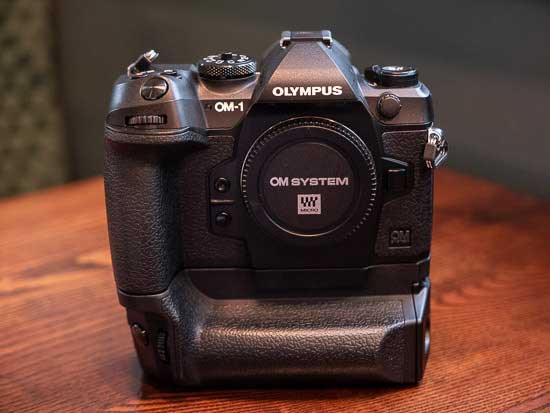 |
The new sensor has a quad-division photo diode configuration which allows for on-chip Phase Detection AF in both vertical and horizontal directions. This provides a whopping 1053 all-cross-type points that cover 100% of the frame and is capable of working down to -8EV low light at F1.2, with the ability to choose from all points to setup your own custom AF layouts.
The new system is claimed to be 2x more accurate and 3x faster than the one on the E-M1 III.
The Olympus E-M1 III could shoot an impressive 18 full-resolution frames per second with continuous autofocus/autoexposure when using the electronic shutter, or 50fps with AF/AE locked to the first frame of the sequence.
The new OM System OM-1 takes things to another level entirely, providing 50fps blackout free continuous shooting with full AF/AE tracking at full resolution, and up to 120fps with the AF/AE locked at the first frame, making it one of the fastest, if not the fastest, cameras on the market.
Note that those impressive speeds are only achievable when using the electronic shutter. If you want to use the mechanical shutter, you’re more limited to a still very rapid 18fps, which is slightly faster than the EM-1 III’s 15fps.
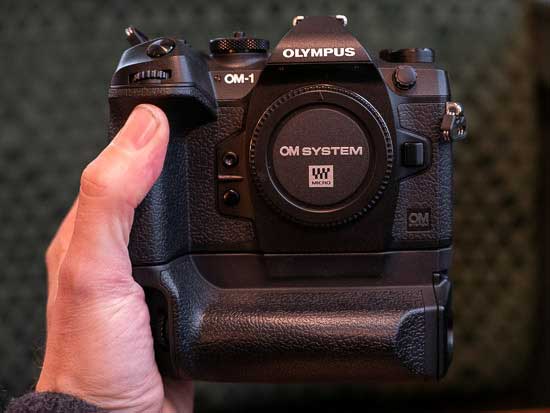 |
Additionally, the OM1 has an improved Silent mode, in which it uses an electronic shutter capable of high-speed continuous shooting at up to 20fps with full AF/AE tracking, although there is some blackout between frames.
The shutter life is rated at 400,000 actuations, exactly the same as the previous model. Note that this is for mechanical actuations, not electronic, so if you shoot at 50fps when using the electronic shutter, it won’t actually affect the shutter count.
The OM System OM-1’s further improved 5-axis in-body image stabiliser works in tandem with the in-lens stabilisation system incorporated into certain lenses to provide a claimed 8-stop advantage when shooting hand-held, surpassing most other cameras that we’ve ever tested, including the previous Mark III model.
The majority of Four Thirds lenses don’t feature sync IS, but the OM-1 still uses its in-body stabilization to offer a whopping 7.0 stops of compensation, still surpassing most other cameras.
It can also use its excellent 5-axis sensor-shift image stabiliser whilst shooting video, which translates into surprisingly smooth hand-held footage, even when using a medium telephoto lens.
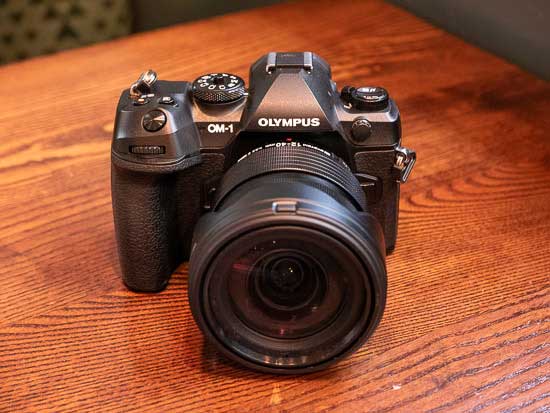 |
The OM1 is markedly better than its predecessor in terms of video performance. It can now record video at C4K/60p quality, compared with C4K/24p on the older E-M1 III and E-M1X models, whilst Full HD now goes up to 240fps (up from 120fps).
The OM-1 finally also supports H.265 (10bit) as well as the H.264 (8bit) standard that the E-M1X and E-M1 III supported, as well as RAW data output up to 12 bit 4:4:4 to external devices and a new HLG (Hybrid Log Gamma) mode.
Manual exposure can be enabled for videos, although you do have to rotate the mode dial to the Movie position to take advantage of this. You can start filming in practically any other shooting mode too, but in that case, videos will always be recorded with auto exposure.
The OM-1 offers the flat OM-Log profile for more flexible colour grading in post-production and editing. It also has a dedicated 3.5mm mic jack on the body for better sound recording as well as a headphone jack for monitoring the audio.
The clever High Res Shot shooting mode has been retained, with the OM-1 capable of shooting 50 megapixel images in the Handheld High-Res Shot mode and 80 megapixels in the Tripod High Res Shot mode. It’s now faster than the previous model, though, taking about 5 seconds to merge the images, and noise has been reduced by approximately 2 stops.
Another clever feature that can also be employed handheld is Live ND, which uses a similar method of merging multiple exposures together, but this time to capture images using a slower shutter speed in daylight.
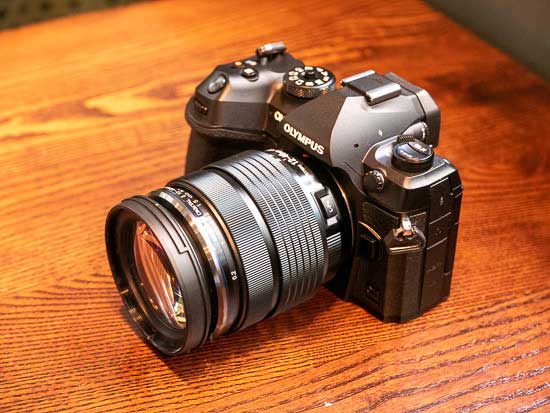 |
Traditionally you’d need to fit a glass ND filter in front of the lens to achieve this effect, but here it’s as simple as selecting the Live ND option and choosing from the 6 levels on offer, running from ND2 (1 step) to ND64 (6 steps), which is 1 stop better than the E-M1 III.
It’s not quite as powerful as fitting something like a Lee Big Stopper 10-step filter, but being able to achieve much longer exposures simply by choosing a menu option whilst hand-holding the camera and even previewing the effect in the viewfinder or LCD screen before capture is extremely liberating.
Note that it doesn’t work with flash, though, so you’ll still need a glass ND filter to overpower the sun when shooting outdoors.
As its name suggests, the Starry Sky mode helps to avoid errors that are commonly made when manually focusing on the night sky, with the OM-1 using luminance information gathered by the sensor instead of relying on its phase detection or contrast AF systems to achieve accurate focus.
Using this mode, you can even dispense with a tripod altogether if you wish, with focusing sensitivity down to -3.5 EV, while the new night view mode makes it possible to view subjects even in dark environments.
The OM-1 continues to use the same very effective supersonic wave filter for dust reduction as employed on the E-M1 III, which vibrates at a speed of more than 30,000 times per second to instantly remove dirt and dust from the image sensor.
Image Quality
All of the sample images in this review were taken using the 20M Superfine JPEG image size option, which produces an average image size of around 12Mb.
The GH6 is the first OM System Micro Four Thirds camera to push past the 20 megapixel barrier, utilising a brand new 25.2-megapixel Live MOS Sensor with no low-pass filter.
The OM System OM-1 produced images of outstanding quality during the review period. It produces noise-free images at ISO 100 to 1600, with limited noise starting to appear at ISO 3200. ISO 6400 and 12800 exhibit quite visible noise and loss of fine detail, while the fastest setting of 25600 looks much better on paper than in reality.
The various Photo Styles and Filters allow you to quickly and easily customise the look of the camera’s JPEG and Raw images before you take them. The night photograph was excellent, with the maximum shutter speed of 60 seconds and Bulb mode of up to 30 minutes allowing you to capture plenty of light.
The High Resolution Mode successfully creates much larger 50 or 100 megapixel images and can be employed when the camera is mounted on a tripod and also hand-held. It’s still best reserved for use with non-moving subjects.
Noise
There are 12 different ISO settings available on the OM System OM-1 which you can select at any time if the camera is in one of the creative shooting modes. Here are some 100% crops which show the noise levels for each ISO setting for both JPEG and RAW formats.
|
JPEG |
RAW |
|
ISO 80 (100% Crop) |
ISO 80 (100% Crop) |
 |
 |
|
ISO 100 (100% Crop) |
ISO 100 (100% Crop) |
 |
 |
|
ISO 200 (100% Crop) |
ISO 200 (100% Crop) |
 |
 |
|
ISO 400 (100% Crop) |
ISO 400 (100% Crop) |
 |
 |
|
ISO 800 (100% Crop) |
ISO 800 (100% Crop) |
 |
 |
|
ISO 1600 (100% Crop) |
ISO 1600 (100% Crop) |
 |
 |
|
ISO 3200 (100% Crop) |
ISO 3200 (100% Crop) |
 |
 |
|
ISO 6400 (100% Crop) |
ISO 6400 (100% Crop) |
 |
 |
|
ISO 12800 (100% Crop) |
ISO 12800 (100% Crop) |
 |
 |
|
ISO 25600 (100% Crop) |
ISO 25600 (100% Crop) |
 |
 |
|
ISO 51200 (100% Crop) |
ISO 51200 (100% Crop) |
 |
 |
|
ISO 102400 (100% Crop) |
ISO 102400 (100% Crop) |
 |
 |
File Quality
The file quality settings available on the OM System OM-1 include Normal, Fine and Superfine for JPEGs, and you can also shoot in Olympus’s proprietary ORF raw file format.
|
Superfine (12.6Mb) (100% Crop) |
Fine (7.7Mb) (100% Crop) |
 |
 |
|
Normal (4.9Mb) (100% Crop) |
RAW (17.9Mb) (100% Crop) |
 |
 |
High Resolution Shot
The OM System OM-1 can create an 80, 50 or 25 megapixel JPEG or RAW file in the High Resolution Shot mode, achieved by shifting the sensor in half-pixel steps and capturing eight images over a period of one second.
There’s also a handheld 50 or 25 megapixel High Resolution Shot mode, so don’t have to mount the camera on a tripod or other stable surface to obtain sharp results.
| Off (100% Crop) | On/Tripod/80M (100% Crop) |
 |
 |
| On/Handheld/50M (100% Crop) | |
 |
HDR
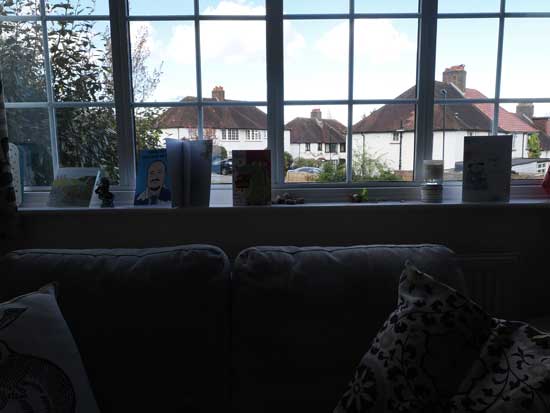
Off
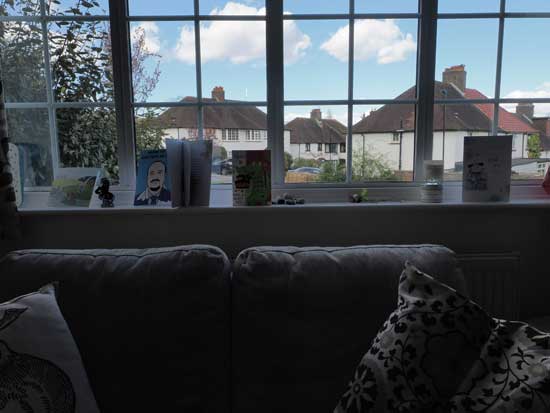
HDR1
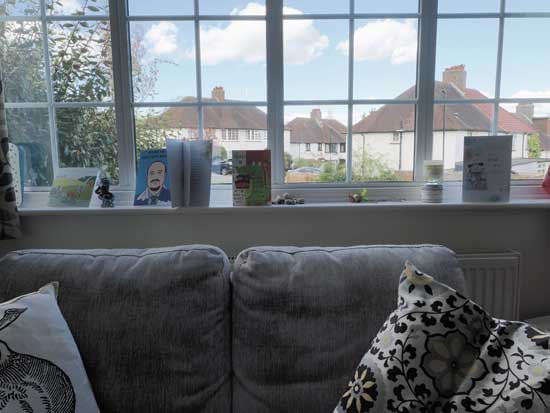
HDR2
Multiple Exposure
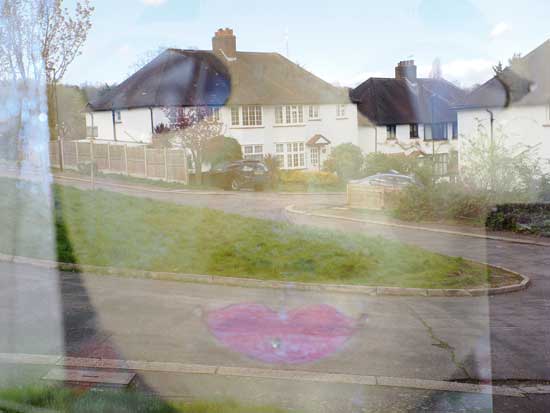
Off
Picture Modes
Olympus’ Picture Modes are essentially pre-set combinations of saturation, contrast and sharpness, except for the i-Enhance mode that aims to optimise each photo individually. You can tailor each Picture Mode to your needs.
|
i-Enhance |
Vivid |
 |
 |
|
Natural |
Muted |
 |
 |
|
Portrait |
Monochrome |
 |
 |
Art Filters
The Olympus OM-D E-M1 Mark III offers 16 ‘art filters’, which allow you to quickly apply an artistic effect to a photo before taking it.
Night
The OM System OM-1 offers exposure times as long as 60 seconds in a metered exposure or up to 30 minutes in bulb mode, which is excellent news for anyone seriously interested in night photography.
Live Bulb mode allows you to view the progression of exposure during a bulb exposure in real-time and a live view histogram shows how the exposure is built-up across all points of the image.

Sample Images
This is a selection of sample images from the OM System OM-1 camera, which were all taken using the 20 megapixel Superfine JPEG setting. The thumbnails below link to the full-sized versions, which have not been altered in any way.
Sample RAW Images
The OM System OM-1 enables users to capture RAW and JPEG format files. We’ve provided some OM System RAW (ORF) samples for you to download (thumbnail images shown below are not 100% representative).
Sample Movies & Video
This is a sample movie at the quality setting of 3840 × 2160 pixels at 60 frames per second. Please note that this 16 second movie is 248Mb in size.
This is a sample movie at the quality setting of 3840 × 2160 pixels at 60 frames per second. Please note that this 16 second movie is 247Mb in size.
This is a sample movie at the quality setting of 3840 × 2160 pixels at 60 frames per second. Please note that this 21 second movie is 315Mb in size.
Product Images


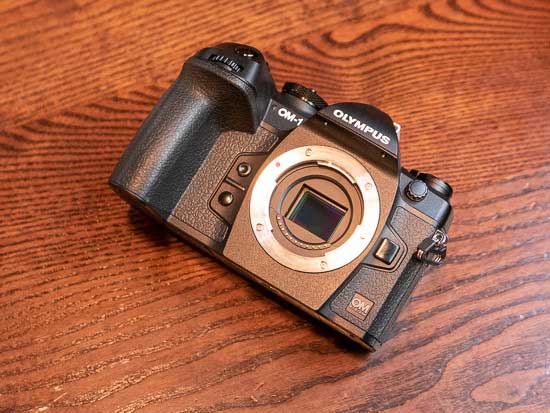
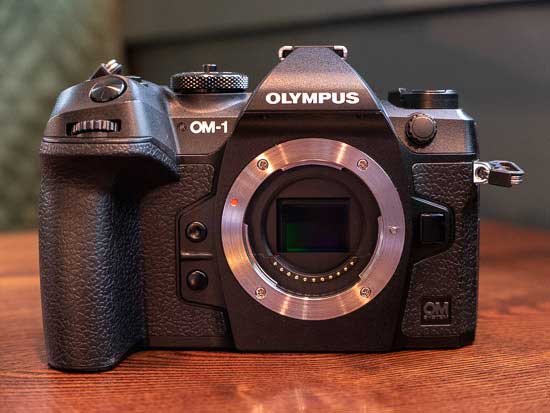
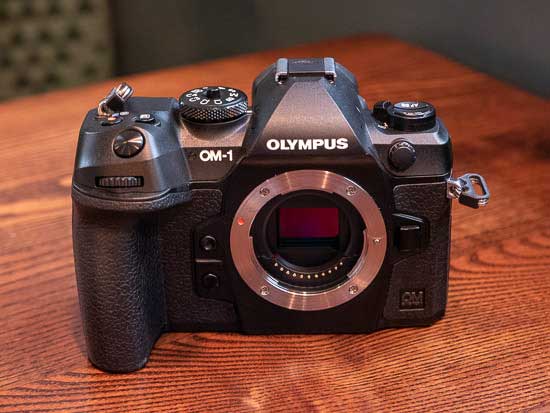

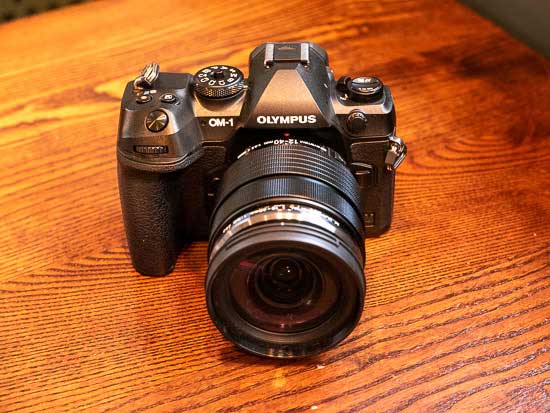
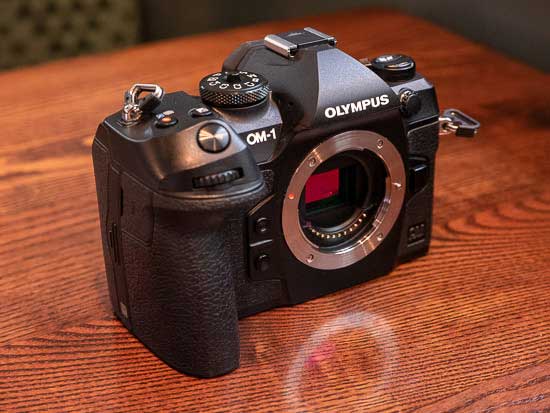
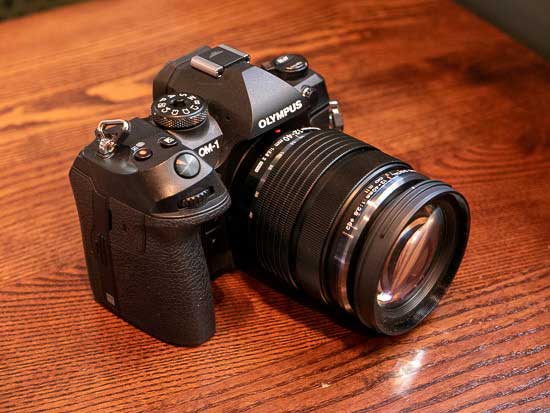
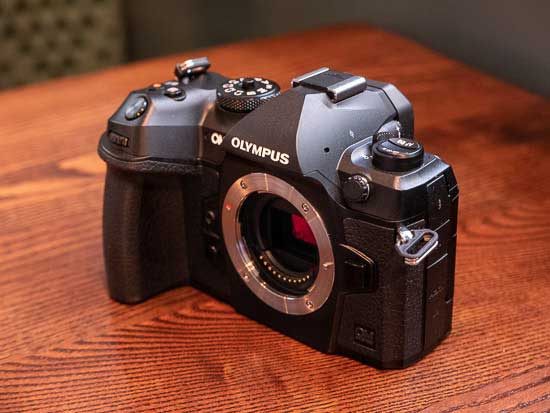

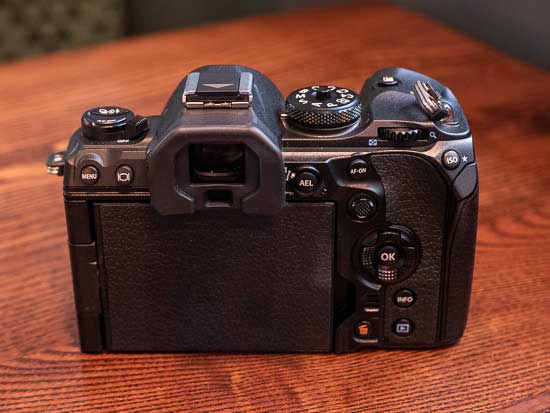
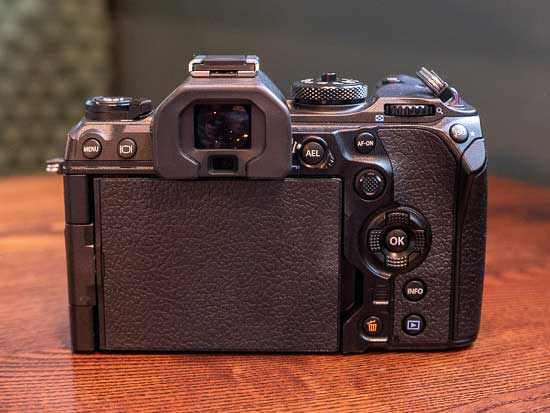

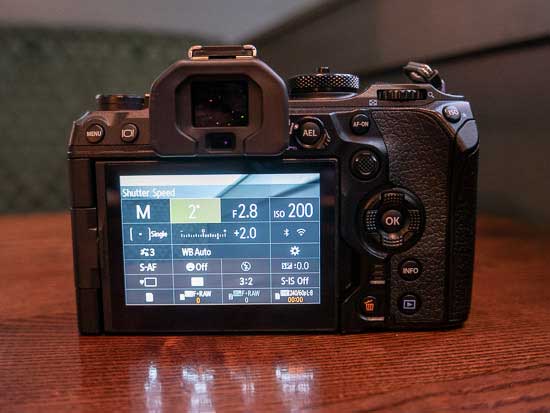
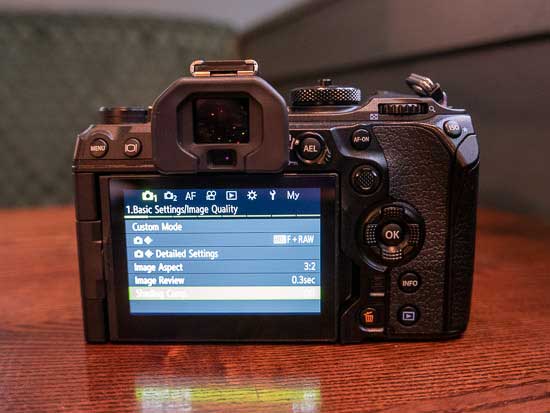

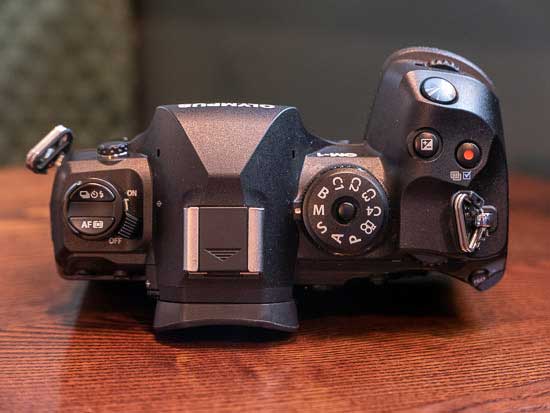
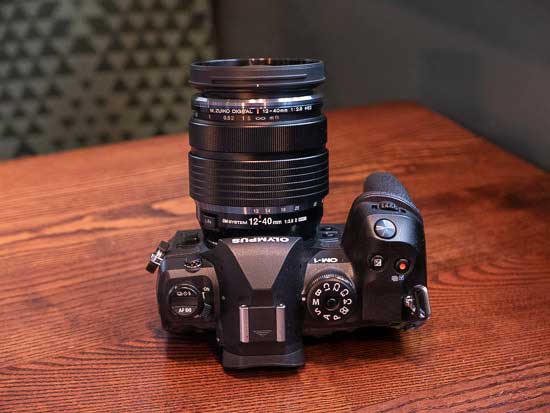
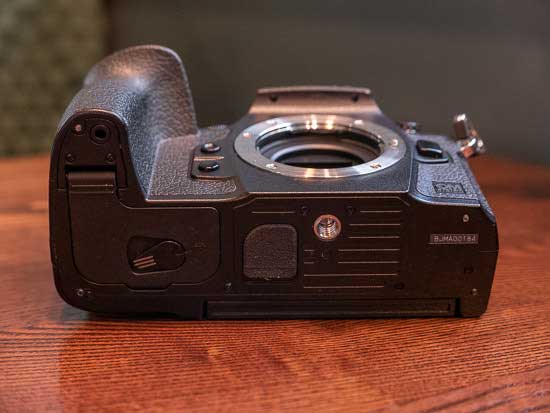

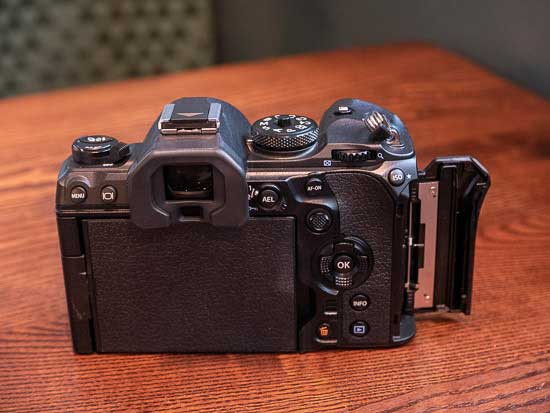


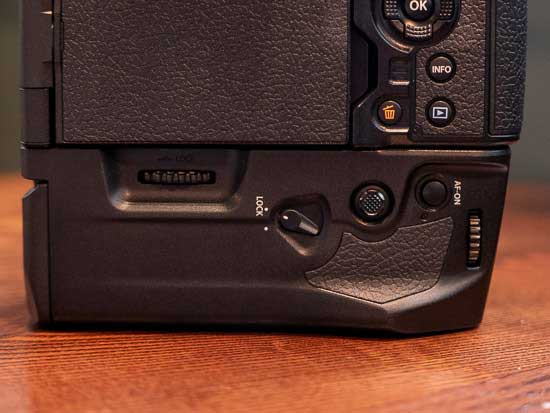
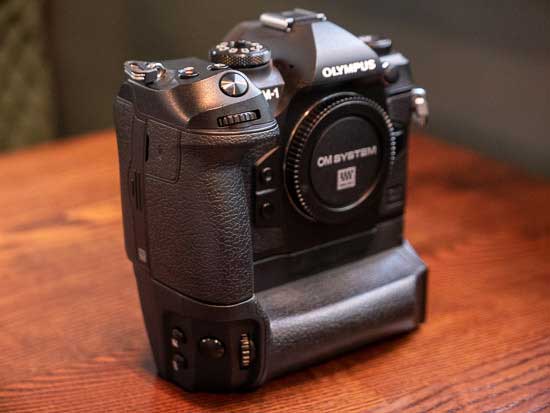
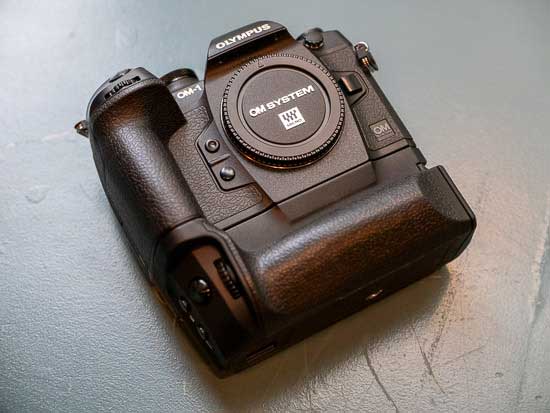
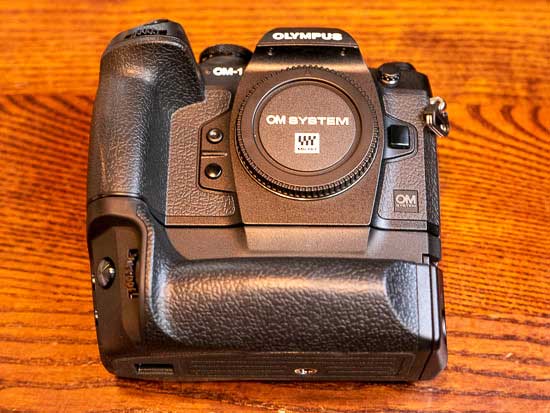

Conclusion
Many neutral observers and devoted Olympus fans alike may well have wondered just what the new OM Digital Solutions company would be capable of delivering when Olympus sold their camera division in late-2020.
Well, wonder no more, as the new OM-1 is the best camera that OM Digital Solutions or indeed Olympus have ever produced, marrying the speed of the E-M1X with the proven handling of the E-M1 III. If this is a sign of things to come, then Olympus fans certainly have no need to worry.
Whilst outwardly the OM1 seems to be identical to the EM1 Mark III, offering just a few enhancements including the much improved viewfinder and LCD screen and the welcome AF-On button, inside there are a whole raft of improvements that focus mainly on one thing – speed.
It may not offer any more resolution than the previous model, with the new owner of Olympus cameras resolutely sticking to 20 megapixels, but thanks to the new stacked image sensor and faster processor, the new OM-1 can shoot a lot more frames per second, detect a lot more subjects and focus on them more quickly and reliably, and process images faster than ever before.
The video specs and all-round performance have also seen a welcome boost, and the already class-leading image stabilisation and weather-proofing are even better than before.
The new OM Digital Solutions have seemingly addressed almost every criticism that was levelled at both the E-M1 III and E-M1X, with the notable exception of the number of megapixels, but that’s something that we’d happily accept given all the other improvements that have been made.
They do come at a literal price though – £1999 / $2199 body-only in the UK and US makes the OM-1 £200 / $400 more expensive than the previous E-M1 Mark III model was at launch.
OK, so quite a lot has been going on in the three years since the E-M1 III was released, but even so and even with all of its many improvements, the new OM-1 is undoubtedly expensive for a Micro Four Thirds camera.
It certainly faces some very stiff competition at this price-point, most notably from the full-frame Sony Alpha A7 IV, the APS-C sensor Fujifilm X-T4, and the MFT Panasonic Lumix GH6, not to mention the likes of the Canon EOS R6 and the Nikon Z6 II.
Overall, though, if you can look beyond the sensor size, the OM System OM-1 is one hell of a camera, one that will certainly please current Olympus owners and which also deserves to expand the system’s appeal.
| Ratings (out of 5) | |
|---|---|
| Design | 4.5 |
| Features | 5 |
| Ease-of-use | 5 |
| Image quality | 4.5 |
| Value for money | 4 |
Main Rivals
Listed below are some of the rivals of the OM System OM-1.
The EOS R6 is the best ever Canon mirrorless camera – there, we said it! If you want to find out why, carry on reading our in-depth Canon EOS R6 review, complete with full-size sample photos and videos.
The Nikon Z6 II mirrorless camera is an evolutionary upgrade of the original Z6, principally improving the autofocusing, buffer and video and adding a second memory card slot. Is this enough to compete with its main rivals? Find out now by reading our in-depth Nikon Z6 II review, complete with full size sample photos and videos…
The new OM-D E-M1 Mark III is a serious camera for serious photographers, designed to showcase the very best that Olympus has to offer. In the increasingly competitive high-end camera market, does it have what it takes to stand out from the crowd and attract new users as well as satisfy existing ones? Read our Olympus OM-D E-M1 Mark III review to find out…
The much anticipated Panasonic GH6 is finally here! But what does this new flagship camera offer, and can it really improve on the best-selling GH5? We find out in our review of the Panasonic Lumix GH6 mirrorless camera, complete with sample photos, test shots, videos and more…
The Panasonic S5 is a brand new hybrid full-frame mirrorless camera that’s equally as capable at shooting both stills and video. In an ever more crowded market, does the Lumix S5 offer enough to stand out against the likes of the Sony A7 III, Canon EOS R and Nikon Z6? Read our in-depth review of the Panasonic S5 to find out, complete with full-size sample photos and videos.
The new Sony Alpha A7 IV is a new 33 megapixel, 4K/60p video, 10fps burst shooting, cutting-edge auto-focusing hybrid full-frame mirrorless model that pulls no punches in its bid to be the only camera that you need. Find out why we think this is one of the best all-round cameras of 2021 by reading our in-depth Sony A7 IV review…
Review Roundup
Reviews of the OM System OM-1 from around the web.
The OM System OM-1 pushes Micro Four Thirds cameras forward with a Stacked CMOS sensor. It’s a strong upgrade for E-M1 Mark III owners, thanks to better-feeling controls, a refreshed interface, and a robust computational toolset.
Read the full review »
I’ve been an Olympus and Micro Four Thirds user since I purchased a used E-M5 in 2016. I love Olympus, and like many others was sad to hear the news when the company’s photo division came to an end. There was a lot of speculation and anxiety over what JIP would do with the business, but the rebranding to OM Digital encouraged confidence. Since then, I have eagerly awaited the new company’s first camera. And now we have it: the OM System OM-1.
Read the full review »
Specifications
Type
-
Body material
Magnesium alloy body
-
Lens mount
Micro Four Thirds
Image Sensor
Engine
Filter
-
Dust reduction filter
Supersonic Wave Filter
Viewfinder
-
Type
Electronical Viewfinder
-
Pixel number
5760K dots
-
Diopter adjustment
Equipped ‑4.0 ‑ +2.0 diopters / built‑in type
-
Angle of view
Approx. 100%
-
Magnification
Max. 1.65x with a 50mm lens set to infinity at ‑1 dioptre (depending on selected viewfinder style)
-
Eye point
21mm at ‑1 dioptre from eyepiece lens
-
Style
3 styles selectable
-
Brightness adjustment
Adaptive Brightness Technology / Manual settings: +/‑ 7 levels
-
Correction of colour temperature
+/‑ 7 levels
-
S-OVF
Expands the Live View dynamic range
-
*Available in the EVF when in P, A, S, M and B modes. Art filter, WB and exposure are not reflected in EVF.
Live View
-
Field of view
Approx. 100%
-
Magnification levels
3 / 5 / 7 / 10 / 14x
-
Dynamic range expansion
When in HDR1 or HDR2
Image Stabiliser
-
Type
Sensor shift
-
Modes
Five‑dimensional, vertical or horizontal activation, automatic
-
Effective Compensation Range
Up to 8 EV steps* (Sync IS)
-
Up to 7 EV steps*
-
Based on CIPA measurement conditions
-
*When using M.Zuiko Digital ED 12‑40mm f/2.8 PRO (focal length =40mm (35mm equivalent: 80mm))
-
*When using the M.Zuiko Digital ED 150‑400mm F4.5 TC1.25x IS PRO. Focal length: 150mm (35mm equivalent: 300mm), halfway release image stabilisation Off, Frame rate: High
-
Live View stabilisation
Available
Focusing System
-
Method
TTL phase difference detection system, contrast detection system
-
Focus areas
1053 points / cross‑type phase detection AF
-
1053 points / contrast AF
-
All target, Single target (1 point), Small target (9 points), Cross target (39 points), Middle target (63 points), Large target (165 points) , Custom target* (AF area and its increment steps selectable)*Number of saved custom target settings: 4
-
AF working range
‑8 – 19EV (ISO approx.100, with a f/1.2 lens)
-
AF lock
Available; Locked by first position of shutter release button in single AF mode, AE/AF lock button (customised)
-
Separate AF-On button
Available
-
Modes
-
- Manual focus
- Preset MF**
- Single AF*
- Continuous AF*
- AF* Tracking
- Stacking
- Bracketing
-
* incl. manual override
-
** Distance setting values are rough estimates and only AF lenses can be used.
-
AF illuminator
Equipped
-
Manual focus
Available; With enlarged focusing area, focus peaking and focus indicator
-
Face Detection extension
-
- Eye Detect AF: Off
- Left side priority
- Near side priority
- Right side priority
-
Predictive AF
Available
-
AF tracking
Available; Available in continuous AF mode
-
Focus peaking
-
Colour selection
White, black, red, yellow
-
Intensity
High / Normal / Low
-
Back light effect
On / Off
-
Focus Bracketing Mode
-
Number of images
3 – 999 shots
-
Step size
10 levels
-
Compatible with: All Micro Four Thirds AF lenses
-
Focus Stacking Mode
-
Technology
3‑15 images are taken at different focus points and automatically composited together into a single image
-
Compatible with: M.Zuiko Digital ED 60mm F2.8 Macro, M.Zuiko Digital ED 30mm F3.5 Macro, M.Zuiko Digital ED 7‑14mm F2.8 PRO, M.Zuiko Digital ED 8‑25mm F4 PRO, M.Zuiko Digital ED 8mm F1.8 Fisheye PRO, M.Zuiko Digital ED 12‑40mm F2.8 PRO, M.Zuiko Digital ED 12‑40mm F2.8 PRO II, M.Zuiko Digital ED 12‑45mm F4 PRO, M.Zuiko Digital ED 12‑100mm F4 IS PRO, M.Zuiko Digital ED 40‑150mm F2.8 PRO, M.Zuiko Digital ED 40‑150mm F4.0 PRO, M.Zuiko Digital ED 100‑400mm F5.0‑6.3 IS, M.Zuiko Digital ED 150‑400mm F4.5 TC1.25x IS PRO, M.Zuiko Digital ED 300mm F4 PRO
-
M.Zuiko Digital 1.4x Teleconverter MC‑14, M.Zuiko Digital 2x Teleconverter MC‑20
-
Angle of view becomes slightly smaller
-
AF targeting pad
Available (activate/deactivate with double tap on rear monitor)
-
Intelligent Subject Detection AF
-
- Aircrafts
- Bullet trains
- Birds
- Cats
- Dogs
- Formula cars
- Helicopters
- Motorcycles
- Ralley cars
- Standard trains
- Steam locomotives
-
Focus limit
Available
Exposure System
-
Modes
-
- Programme automatic
- Aperture priority
- Shutter priority
- Manual
- Bulb
- Time
- Movie
- HDR
- Custom shooting
- Custom 1
- Custom 2
- Custom 3
- Live Composite
-
Exposure compensation
+/‑ 5 EV (1, 1/2, 1/3 steps)
-
Note: Monitor and EVF displays only up to ±3 EV.
-
Exposure bracketing
2 / 3 / 5 frames (+/‑ 1/3, 2/3, 1 EV steps)
-
7 frames (+/‑ 1/3, 1/2, 2/3 EV steps)
-
ISO bracketing
3 frames (1/3, 1/2, 1 EV steps)
-
AE lock
Available
-
Shadow Adjustment Technology
-
Flicker Scan: Available for M, S and silent mode (can be confirmed in Live View)
-
HDR bracketing
3 / 5 frames (+/‑ 2 / 3 EV steps)
-
7 frames (+/‑ 2 EV steps)
-
Anti-Flicker Shooting function
Available
Multi-Exposure
-
Max. number of frames
2 frames (shooting)
-
3 frames (editing)
-
Auto gain control
Available
-
Frame assistance
Live View
Light Metering
-
Method
TTL open aperture light metering
-
Zones
324 zones Multi‑pattern Sensing System
-
Detection range
‑2 ‑ 20 EV (f2.8, ISO 100)
-
Modes
-
- ESP light metering
- Spot metering
- Centre weighted metering
- Highlight
- Shadow
-
Histogram in shooting mode
Available
Art Filter
-
Modes
-
- Pop Art
- Soft Focus
- Pale & Light Colour
- Light Tone
- Grainy Film
- Pin Hole
- Diorama
- Cross Process
- Dramatic Tone
- Gentle Sepia
- Key Line
- Water colour
- Vintage
- Partial Colour*
- Bleach Bypass
- Instant Film
-
Variation / Effect
Available
-
Art Filter bracketing
Art Filters selectable
-
* 18 colours selectable
Sensitivity
Shutter
Shutter Speeds
-
Shutter speed range
1/8000 ‑ 60s (in 1/3, 1/2, 1 EV steps)
-
Bulb mode
Up to 30 minutes (selectable longest time in the menu, default: 8 minutes)
-
High res shot
-
Shutter type
Electronic shutter
-
Shutter speed
1/8000 ‑ 60s
-
Start delay
0, 1/8, 1/4, 1/2, 1, 2, 4, 8, 15. 30s
-
Resolution
JPEG: 10368×7776 / 8160 x 6120 / 5760 x 4320 RAW: 10368 x 7776
-
Equivalent to 80M / 50M / 25M pixel sensor (8 shots combined into a single JPEG using sensor shift)
-
Available in P/A/S/M mode
-
Handheld High res shot
-
Shutter type
Electronic shutter
-
Shutter speed
1/8000 ‑ 60s
-
Resolution
JPEG: 8160 x 6120 / 5760 x 4320 RAW: 8160 x 6120
-
Equivalent to 50M / 25M pixel sensor (8 shots combined into a single JPEG using sensor shift)
-
Available in P/A/S/M mode
-
Flash can not be used
-
Anti-shock mode
-
Shutter type
Electronic first curtain shutter
-
Shutter speed
1/320* ‑ 60s
-
Start delay
0, 1/8, 1/4, 1/2, 1, 2, 4, 8, 15, 30s
-
* For speeds over 1/320 sec., mechanical shutter will automatically be selected.
-
Silent mode
-
Shutter type
Electronic shutter
-
Shutter speed
1/32000 ‑ 60s
-
Start delay
0, 1/8, 1/4, 1/2, 1, 2, 4, 8, 15. 30s
-
Flicker Scan
-
Stills
1/7634 ‑ 1/50s
-
Movies
1/250 ‑ 1/30s *
-
* Frame rates greater 30fps are limited to their reciprocal value
White Balance
-
Manual White balance (One-Touch)
Available
-
White balance bracketing
3 frames / +/‑ 2, 4, 6 mired steps
-
One-touch white balance
4 custom settings can be registered
-
Custom WB
1 setting can be registered at Kelvin temperature (2000K ‑ 14000K)
-
Preset values
-
- Tungsten
- Flourescent 1
- Sunlight
- Flash
- Overcast
- Shade
- Underwater
-
Auto Flash adjustment
Off / Auto WB / Flash
-
Keep warm colour
On / Off
Sequence Shooting
-
Speed
Approx. 10fps (selectable 1‑10fps)
-
Anti-shock mode
-
Speed
Approx. 10fps (selectable 1‑10fps)
-
Silent mode
-
Speed
Approx. 20fps (selectable 5, 10, 15, 20fps with blackout)
-
Speed SH1*
Approx. 120fps (selectable 60, 100, 120fps without blackout)
-
Speed SH2* **
Approx. 50fps (selectable 25, 50fps without blackout)
-
Pro Capture mode
-
Speed*
Approx. 20fps (selectable 5, 10, 15, 20fps)
-
Speed SH1*
Approx. 120fps (selectable 60, 100, 120fps)
-
Speed SH2* **
Approx. 50fps (selectable 25, 50fps)
-
*Slower shutter speeds and flash cannot be used
-
*Compatible lenses are limited.
-
Max. number of frames
All values are approximate
-
Conditions
Memory card: Toshiba SDXU‑D032G with standard card setting in slot 1
-
When using the M.Zuiko Digital ED 12‑40mm F2.8 PRO II
-
Low ISO processing: Priority is given to sequential shooting
-
10fps
RAW: 139 / JPG (LF): 169
-
20fps
RAW: 108 / JPG (LF): 116
-
50fps
RAW: 96 / JPG (LF): 97
-
120fps
RAW: 92 / JPG (LF): 92
-
Compatible lenses to SH2 (50fps)
M.Zuiko Digital ED 12‑40mm F2.8 PRO, M.Zuiko Digital ED 12‑40mm F2.8 PRO II, M.Zuiko Digital ED 12‑100mm F4.0 IS PRO, M.Zuiko Digital ED 40‑150mm F2.8 PRO, M.Zuiko Digital ED 150‑400mm F4.5 TC 1.25x IS PRO, M.Zuiko Digital ED 300mm F4.0 IS PRO
Image Processing
-
Colour space
sRGB / AdobeRGB
-
Sharpness + Contrast
5 levels
-
Contrast
5 levels
-
Saturation
5 levels
-
Black & White filter
Yellow, Orange, Red, Green
-
Black & White toning
Sepia, Blue, Purple or Green in Black & White mode
-
Gradation
4 levels (auto, high key, normal, low key)
-
Art Filter bracketing
Available
-
Tele converter effect
2x
-
Fisheye compensation
Available when M.Zuiko Digital ED 8mm Fisheye PRO is attached Angle of view adjustable in 3 levels Compensation automatically ON when using Underwater Modes, available (can be confirmed in Live View)
-
Highlight & Shadow control
–
External Flash Control
-
X-sync speed
1/250s / 1/8000s (Super FP Mode)
-
Type
TTL AUTO, AUTO, MANUAL, FP TTL AUTO, FP MANUAL
-
Compatible external flash
FL‑LM3, FL‑600R, FL‑900R, STF‑8, FL‑700WR
-
Modes
-
- Auto
- Red-eye reduction
- Slow synchronisation
- 2nd curtain and slow synchronisation
- Fill-in for exclusive flash
- Manual
-
Intensity
+/‑ 3 EV (1/3, 1/2, 1 EV steps)
-
Note: Some functions are only available if they are supported by the external flash.
Wireless Flash Control
-
Number of channels
4 channels
-
Compatible external flash
FL‑LM3, FL‑600R, FL‑900R, STF‑8, FL‑700WR
-
Control method
Triggered and controlled (Olympus Wireless RC Flash system)
-
Group setting
4 groups
-
Available when used together with cameras compatible with the Olympus wireless RC flash system.
-
Compatible commander
FC‑WR, FL‑700WR
-
For more details see specifications of commander units.
-
Compatible receiver
FL‑700WR, FR‑WR + wireless RC system flash
-
Radio control
-
3 groups
-
Radio wireless control
Available when attaching optional flash commander.
-
Number of channels
4 channels
-
Modes
-
- Auto
- FP TTL Auto
- Manual
- TTL Auto
- FP Manual
Monitor
Level Gauge
Super Control Panel
-
Displayed information
-
- Battery indicator
- Record mode
- Shutter speed
- Aperture value
- Exposure compensation indicator
- ISO
- AE bracketing
- AF frame
- Focus mode
- AEL notification
- Face detection
- Number of storable frames
- Metering mode
- Exposure mode
- Exposure level view
- Flash compensation value
- Colour space
- Gradation
- Colour saturation compensation value
- Sharpness compensation value
- Contrast compensation value
- White balance
- White balance compensation value
- Noise reduction
- Flash mode
- Drive mode
- Internal temperature warning
- Histogram
Recording Formats
Image Size
Still Image Recording
-
EXIF
2.31
-
DCF
Applied
-
RAW
Applied
-
Dual SD card settings
Standard, Auto Switch, Dual Independent, Dual Same
-
When two cards are inserted, card to be saved onto or to be viewed can be designated.
Movie Recording System
-
Recording format
MOV(MPEG‑4AVC/H.264)/ MOV (HEVC/H.265)
-
Picture mode
Flat, OM‑Log400, HLG (View assist compatible)
-
Time code
Rec run / Free run
-
Drop frame / Non‑drop frame
-
Image Stabilisation Mode
Applied Sensor shift (5‑axis)
-
M‑IS1 (Image sensor shift and electronic image stabilizer with multi motion IS)
-
M‑IS2 (Image sensor shift with multi motion IS)
-
MOV(MPEG-4AVC/H.264)
-
4096×2160 (C4K)
30p, 25p, 24p / LongGOP (approx. 102 Mbps)
-
60p, 50p / LongGOP (approx. 202 Mbps)
-
3840×2160 (4K)
30p, 25p, 24p / LongGOP (approx. 102 Mbps)
-
60p, 50p / LongGOP (approx. 202 Mbps)
-
1920×1080 (FHD)
30p, 25p, 24p / ALL‑I (approx. 202 Mbps)
-
/ LongGOP (approx. 27 Mbps)
-
60p, 50p / LongGOP (approx. 52 Mbps)
-
MOV (HEVC/H.265)
-
4096×2160 (C4K)
30p, 25p, 24p / LongGOP (approx. 77 Mbps)
-
60p, 50p / LongGOP (approx. 152 Mbps)
-
3840×2160 (4K)
30p, 25p, 24p / LongGOP (approx. 77 Mbps)
-
60p, 50p / LongGOP (approx. 152 Mbps)
-
1920×1080 (FHD)
30p, 25p, 24p / ALL‑I (approx. 82 Mbps)
-
/ LongGOP (approx. 22 Mbps)
-
60p, 50p / ALL‑I (approx. 162 Mbps)
-
/ LongGOP (approx. 42 Mbps)
-
Maximum Recording Time
Unlimited
-
Exposure Modes
-
- Aperture priority
- Manual
- Programme automatic
- Shutter priority
-
Class 10 or higher SD card is recommended for movie shooting
-
UHS‑II or UHS‑I U3 card is recommended for ALL‑I shooting
Movie Specialties
-
High-Speed Recording
1920×1080 (MOV) / 240fps
-
Time lapse
4k, 1080p, 720p / 5, 10, 15, 30fps
-
Max. number of frames: 9999
-
Fast motion
Available
-
Slow motion
Available
-
Art Filter
-
- Cross Process
- Diorama
- Dramatic Tone
- Instant Film
- Water colour
- Gentle Sepia
- Grainy Film
- Key Line
- Light Tone
- Pale & Light Colour
- Pin Hole
- Pop Art
- Soft Focus
- Vintage
- Partial Colour*
- Bleach Bypass
-
Frame rate may drop when using certain art filter
-
Flicker Scan
Available in M mode (can be confirmed in Live View)
-
HDMI Live View
-
Monitor / Record / RAW
-
Monitor mode
Video signal and info display is processed
-
In monitor mode, the image cannot be enlarged on the camera when a movie is being recorded.
-
Record mode
Only video signal is processed
-
In record mode, movie quality can be set to YCbCr 4:2:2 (8 bit).
-
When recording simultaneously in the camera in 4K/C4K/FHD HS, 4:2:0 is upsampled to 4:2:2.
-
In RAW mode, output video quality is 4K/C4K 12bit RAW data, frame rate follows movie setting, and sound will be recorded.
-
ProRes RAW 4:4:4 12bit is supported
-
1920×1080 / 120fps
-
1920×1080 / 100fps
Sound Recording System
-
Internal microphone
Stereo
-
Recording format
High quality sound recording (Stereo linear PCM/24‑bit, Sampling frequency 96kHz)
-
Stereo PCM/16bit, 48kHz, Wave Format Base
-
Image footage
30s
-
Speaker
Equipped
-
Microphone functions
-
- Wind Noise Reduction
- Recording Volume
- Volume limiter
View Images
Erase / Protect / Copy Function
-
Erase modes
Single, All, Selected
-
Image protect mode
Single frame, Selected frames, All Frames, Release protect (Single/All selected)
Image Editing
-
Editing functions
-
- RAW data edit
- Red-eye reduction
- Sepia
- Black & White
- Resize
- Correction of saturation
- Correction of brightness
- Correction of colour balance
- Shadow Adjustment
- Trimming
- Aspect ratio
Menu
-
Menu languages in camera
English, French, German, Spanish, Italian, Japanese, Traditional Chinese, Simplified Chinese, Russian, Czech, Dutch, Polish, Portuguese, Swedish, Norwegian, Finnish, Slovak, Thai
Customisation Options
Interface
-
Media
SD Memory Card (SDHC, SDXC, UHS‑I, UHS‑II compatible) Class 10 or higher SD card is recommended for movie shooting UHS‑II or UHS‑I U3 card is recommended for 4K, C4K, ALL‑I shooting.
-
HDMI™
Applied Micro connector (Type D) *
-
* “HDMI”, the HDMI logo and “High‑Definition Multimedia Interface” are trademarks or registered trademarks of HDMI Licensing LLC.
-
USB 3
Type C
-
Wireless connectivity
-
Communication method
Bluetooth® Low Energy Ver.4.2
-
SAR
0.52W/kg
-
SAR quantifies the maximum level of exposure of the user to electromagnetic waves, when using the device close to the head.
-
SAR shall not exceed 2W/kg in accordance with regulations of France.
-
Wi‑Fi is a registered trademark of the Wi‑Fi Alliance.
-
The Bluetooth® word mark and logos are registered trademarks owned by the Bluetooth SIG, Inc. and any use of such marks by OLYMPUS CORPORATION is under license.
-
Tethered control
Available USB cable (camera operation by both PC or camera controls)
-
Wi‑Fi (transfer of recorded images to PC via access point, 5GHz and 2.4GHz available)
-
Microphone jack
3.5 ø mm mini‑jack
-
Earphone jack
3.5 ø mm mini‑jack
-
Synchro socket
Equipped
Wi-Fi Functions
-
Easy Connection
QR code setting
-
Wireless Shooting
-
- Live View
- Power off
- Rec View
- Self timer
- Touch AF & Shutter
- P/A/S/M exposure modes
- Bulb mode
- Zoom
- Movie recording
- Live Composite
- Short movie
Power Supply
-
Battery
BLX‑1 Lithium‑Ion Battery
-
Sleep mode
1, 3, 5min. and off selectable.
-
Internal Charging
USB
-
USB charging
Performance varies depending on different USB devices
-
USB bus power
USB PD bus power can be used (PD compliant camera: Rev 3.0 Ver 1.0a)
-
Battery life
-
Image shooting
520 shots (using BLX‑1 under CIPA testing conditions) 1100 shots (using quick sleep mode, under Olympus testing conditions based on CIPA test standards)
-
Movie recording
90min (standard JEITA conditions) 160min (when zoom and other operational functions are not used)
-
* Note: Values are approximate.
Environment
Dimensions / Weight
Exterior
Your Comments
by
Tags:
Leave a Reply